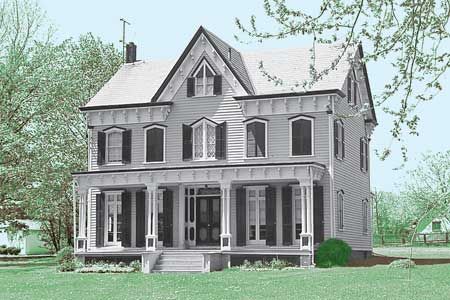The American home underwent a dramatic transformation in the 20th century, reflecting changes in technology, culture, and societal values. From the way houses were built to how they were financed, much about American housing changed throughout the 1900s.
Elements of housing we now consider commonplace — grass yards, large windows, and roomy backyards — were foreign concepts to all but the wealthiest of home buyers in the 19th century. Even the fact that nearly 66% of Americans own their homes is startlingly different from the situation of a century ago.
We called on a panel of experts to help us look at some of the primary factors that changed the housing landscape. The experts included:
- Chrysanthe Broikos, an associate curator at the National Building Museum
- Carolyn Goldstein, whose book Do It Yourself examines home repair in the 20th century
- David Shayt, an occupational history and hand tool specialist at the Smithsonian Institution’s National Museum of American History
- Joel Tarr, a professor of history and politics at Carnegie Mellon University
- Bill Yeingst, a specialist in domestic life at the Smithsonian’s National Museum of American History
Here’s what they identified as the biggest changes in housing in the 20th century.
1. The Federally Guaranteed Mortgage
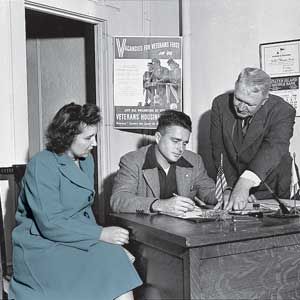
The creation of the Federal Housing Authority (FHA) in 1934 – along with the introduction of the amortized mortgage in the 1930s – made homeownership more attainable for the average American. The introduction of tax-deductible mortgages further incentivized homeownership.
“The creation of the federally guaranteed mortgage is what explains the skyrocketing of residential development, even in postwar America,” Goldstein says. This financial innovation stimulated the housing market and set the stage for a new era of homeownership.
The Servicemen’s Readjustment Act of 1944, better known as the G.I. Bill, allowed veterans to obtain guaranteed home loans, opening doors for a whole generation of Americans.
“Suddenly, with little or no money down and low interest rates, a whole generation of Americans could obtain a piece of the dream,” Yeingst says.
2. Indoor Plumbing
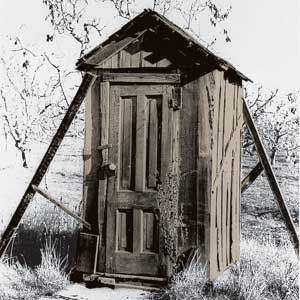
The widespread adoption of indoor plumbing improved health and cleanliness while revolutionizing kitchen and bathroom design. The introduction of flush toilets and running water in homes marked a significant leap forward in convenience and sanitation.
This advancement led to the development of other water-dependent appliances, such as washing machines. The evolution from functional “water closets” to today’s elaborate master bathrooms is a testament to the profound impact of indoor plumbing on home design.
3. Electrification
The electrification of homes in the early 20th century fundamentally changed how Americans lived. “You had electric lamps in upper-income houses before 1900, but everything else comes after, and it completely changed the home as we know it,” Goldstein says.
Electricity extended productive hours beyond sunset and paved the way for countless electrical appliances that would become household staples, including refrigerators and televisions.
4. Plywood and Drywall
Plywood and drywall are lightweight, sturdy alternatives to traditional materials like board sheathing and plaster that dramatically reduced construction time and costs. Drywall was invented in 1916, though its adoption as a common building material did not occur for another 25 years after its invention.
These mass-produced panels in standardized sizes cut down on installation labor by eliminating extra handling, skilled finishing, and excessive cutting. The result was stronger, more flexible buildings that could be constructed more quickly and affordably.
5. Levittown And The Birth of Tract Housing
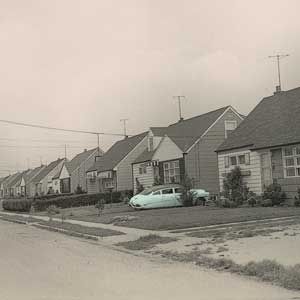
Levittown, developed from 1947 to 1951, became the symbol of mass-produced housing in America. Located 30 miles east of New York City, this 6,000-acre tract of more than 17,000 homes changed the face of suburban living.
“It really stands as the icon of postwar suburban lifestyle,” says Yeingst. “It brought us the whole concept of the inverted assembly line, where the sites remained fixed but the crews moved from site to site, which kept costs down.” At its peak, workers in Levittown produced an astonishing 35 houses per day, setting a new standard for efficient home construction that continues to influence modern builders.
6. The Wrecking Ball
In the 20th century, the “throw-away society” approach to housing became as uniquely American as our building efforts. “The phenomenon of destroying our architecture is not one you find elsewhere,” Shayt says.
While some homes were burned in the 18th century in order to salvage nails, most often the material components of a house were so valuable the rule was to add on, not obliterate. “A fair bit of one’s life was invested in the timbers and masonry of one’s house,” Shayt says. “That’s why handing one’s house down to children and grandchildren was much more the case than it is today.”
7. Synthetic Fibers
In the 19th century, wood floors were among the only options. The development of synthetic allowed homeowners to fill their homes with plush, wall-to-wall carpeting. “Once the FHA started to include wall-to-wall carpeting as a requirement,” says Goldstein, “it became standard and even expected, which was a real change from the past.” Today, synthetic materials often cover furniture, walls, and windows as well.
8. Air Conditioning
Air conditioning transformed not just individual homes but entire regions of the country. “A lot of traditional house features were designed for passive cooling, like high ceilings, deep eaves and deep front porches,” Broikos says. “But once you became dependent on mechanical cooling, those passive features tended to disappear.”
This innovation made living in hot climates more comfortable, fueling housing booms in Southern states. “Air-conditioning made possible the expansion of the Sun Belt cities,” Tarr says. “You wouldn’t want to live in Houston or Tucson without it.”
9. Building Codes and Safety Regulations

The 20th century saw the introduction and evolution of building codes and safety regulations. These measures addressed various hazards, from lead paint to asbestos, significantly improving home safety.
“Design changes have steered us toward the ranch-style house versus a multistory house with stairs,” Tarr says. “It’s simple: Cut down the number of stairs, and you reduce accidents.”
10. The Refrigerator

Nineteenth-century iceboxes were somewhat effective, but the modern refrigerator enabled households to store larger amounts of food reliably and conveniently for the first time. It was, arguably, the first step toward the modern kitchen. “There’s no more important appliance to the household than the refrigerator,” Broikos says.
11. The Grass Lawn
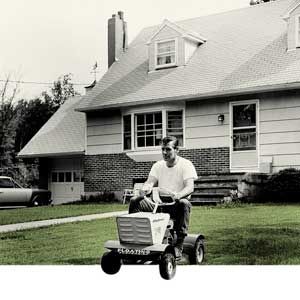
The concept of the manicured lawn as we know it today is largely a 20th-century trend. Prior to this shift, front yards were often occupied by wildflowers, tall grass, or vegetable gardens. The rise of the lawn as a status symbol and a central feature of home landscaping has had a lasting impact on American suburbs, influencing property values and even local ordinances.
12. Large Windows and Open Spaces
A notable trend in 20th-century home design was the desire to blur the line between indoor and outdoor spaces. Large windows, skylights, and open floor plans became increasingly popular, creating a sense of spaciousness and connection with nature.
“The idea of space and big rooms is relatively new,” Shayt says. “A century ago, people would worry about how to use all the space and fill it with furniture, but that’s no longer an issue.” This shift towards larger, more open interiors has become a defining feature of modern home design.
13. The Interstate Highway System and Suburban Expansion
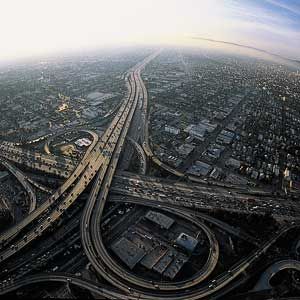
The introduction of the Federal-Aid Highway Act of 1956 began a $130 billion project to construct the 46,000 miles of roadways that link the nation today. These new freeways opened up previously inaccessible areas for suburban development.
“Our mobility quite simply changed our housing,” Tarr says. “Suddenly, we could live in a suburban environment that offered large spaces around the houses. Before that, people lived in much denser conditions.”
As suburbs expanded further from city centers, commute times increased dramatically. The two-hour commute, once unthinkable, became a reality for many Americans. This shift in living patterns reflected changing priorities, with many families willing to trade longer commutes for larger homes and yards in suburban areas.
14. Home Security Systems
Home security systems, from simple locks to sophisticated alarm systems, became increasingly common throughout the 20th century. This trend reflected growing concerns about urbanization and changing demographics. “The whole idea of sealing up your house from outsiders is a big change,” Shayt says. “One hundred years ago, there weren’t even serious locks on the doors, just latches.”
15. The 1970s Energy Crisis
The energy crisis of the 1970s had a profound impact on home design and construction. “Oil prices of the ’70s really drove a lot of energy saving in home-building,” Tarr says. “It led us to better weather stripping, insulations, and even double-paned windows.” This shift marked a significant departure from previous construction methods that often prioritized airflow over energy conservation.
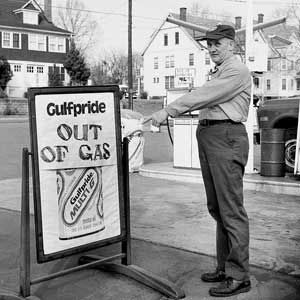
But innovations in insulation and weather-proofing also brought new challenges. “In trying to fill all the holes and cracks, you breathe the same body of air longer, so we’ve, in turn, caused air pollution problems inside the home,” Tarr says.
This realization led to further innovations, such as air exchangers and improved mechanical ventilation systems, designed to maintain energy efficiency while ensuring healthy indoor air quality.
